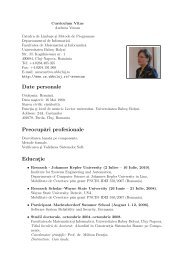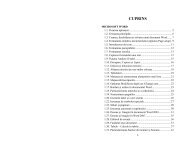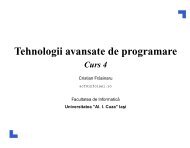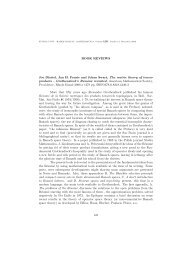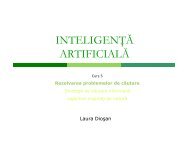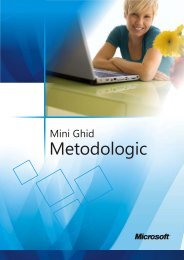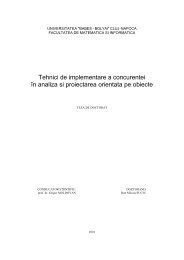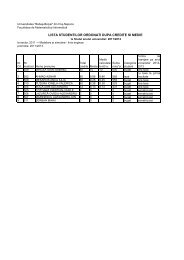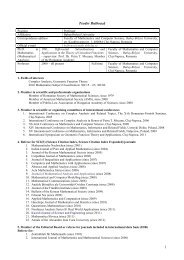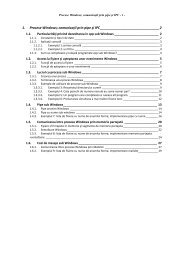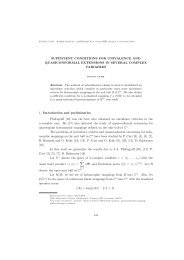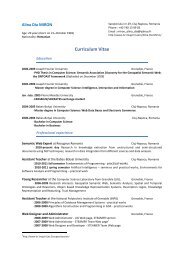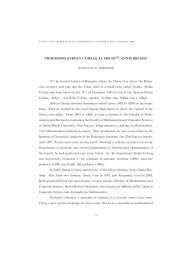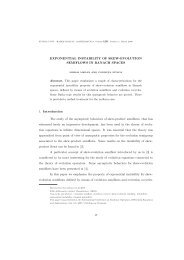CONTENTS
CONTENTS
CONTENTS
You also want an ePaper? Increase the reach of your titles
YUMPU automatically turns print PDFs into web optimized ePapers that Google loves.
212 DUMITRU RĂDOIU(1) AND CĂLIN ENĂCHESCU(2)<br />
the returned hits. Most of the hits were useless and extracting structured information<br />
was the job of the humans. Developing an ontology for a domain and writing content<br />
which adheres to it allows automatic extraction of new knowledge from different<br />
web resources either to make it available for further automatic processing or to save<br />
humans effort in finding high value structured information. Building an ontology of<br />
a domain is not a goal in itself; it is just a means to an end.<br />
The first benefit is that we share a common understanding of the way the information<br />
in a domain is structured [3]. The second (with huge implications) is that<br />
we can now separate the process of structuring the information of a domain from<br />
the process of automatically retrieving new structured information from different web<br />
resources.<br />
2. Defining Ontology<br />
”An ontology is an explicit representation of a shared understanding of the important<br />
concepts in some domain of interest” [5]. Human knowledge is subjective.<br />
Ontology is conceived to explicitly describe a cognitive structure upon which individuals<br />
”objectivity agree about subjectivity” [6].<br />
An ontology can be expressed at different levels of abstractions:<br />
• in a natural language, as sets of declarative statements<br />
• in a visual modeling language (e.g. UML) as a set of glyphs syntactically and<br />
semantically organized<br />
• in a formal language (e.g. OWL) as a set of formal statements<br />
Natural language statements are difficult to process by a computer (program). Visual<br />
representations - although very expressive - don’t provide enough flexibility. Hence<br />
most ontology editors allow visual representations which they convert automatically<br />
in a formal language.<br />
So, the aim of any ontology is to capture the intrinsic conceptual structure of<br />
the domain by providing a ”catalog” of the type of ”things” assumed to exist in<br />
the domain, their properties and how can we ”reason” about them. It follows that<br />
ontology is concerned with:<br />
• The type of ”things” in the domain. ”Things” are called entities (objects,<br />
actors), they may or may not have properties (which may take or take not<br />
values)<br />
• The explicit hierarchical organization/categorization of entities in a domain<br />
(named taxonomy)<br />
• Possible relations among entities (semantic interconnections). They are described<br />
in short sentences (named triples)<br />
• What terms (and rules to combine them) we can use when documenting<br />
knowledge about the domain (vocabulary)<br />
• What inference laws and logic laws can we used when we automatically process<br />
a resource which adheres to our ontology



